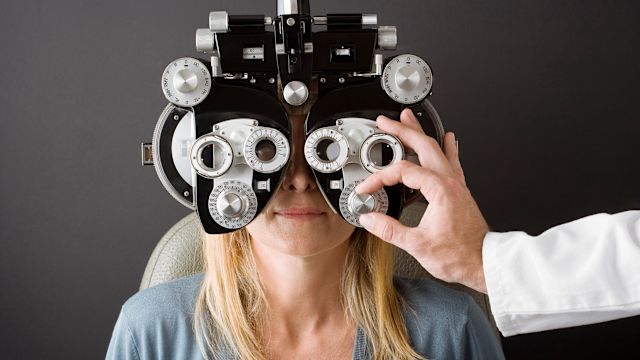Updated on August 8, 2025
The thyroid gland is a butterfly-shaped gland located in the throat. It is part of the body’s endocrine system, a system of glands and organs that produce and release hormones into the bloodstream. Hormones are chemical messengers that interact with cells and regulate different processes in the body.
Nearly every system in the body relies on the hormones produced by the thyroid gland to function properly. Thyroid hormones help regulate metabolism (the process of converting food into energy), weight, heartbeat, internal temperature, the breakdown and repair of cells that make up the bones, energy levels, and sexual function.
To function properly, the body’s organs need the right hormones in the right amounts. When the thyroid gland does not function normally, problems occur. One example is thyroid eye disease (TED).
Graves’ disease
TED occurs in people who have an autoimmune disorder called Graves’ disease. Autoimmune disorders are disorders where the body’s immune system attacks healthy tissue. When a person has Graves’ disease, the immune system creates antibodies (proteins that help neutralize bacteria and viruses) that attack the thyroid gland. This causes hyperthyroidism, where the thyroid gland produces too much thyroid hormone. Graves’ disease is the most common cause of hyperthyroidism.
The exact causes of Graves’ disease are unknown. It is much more common in women than men, and while Graves’ disease affects people of all ages, onset is more common in a person’s 30s and 40s. It is also more common in people who have another autoimmune disorder (such as rheumatoid arthritis). Genetics and family history are a risk factor.
Other names for TED
Thyroid eye disease is known by a few different names. It can be helpful to know these other names if you are reading about the condition:
- Graves’ eye disease
- Graves’ ophthalmopathy
- Graves’ orbitopathy.
“Graves’” refers to Robert James Graves, an prominent Irish physician who was one of the first healthcare providers to describe this disease.
Symptoms
Symptoms can vary from person to person and vary in severity. TED can occur before the onset of Graves’ disease, at the same time as the onset of Graves’ disease, or after symptoms of Graves’ disease develop.
The antibodies characteristic of Graves’ disease can cause inflammation and changes to the tissue structure in different parts of the eye and the areas around the eyes. Swelling in the muscles around the eyes can push the eye forward, causing the eyes to bulge or protrude from the sockets. A person may experience redness, pain, and puffiness around the eyes.
At the same time as the eyes protrude, eyelids can swell and draw back. Eyelids protect the eyes from the environment, keeping out dust and other irritants, shielding the eyes from the wind, and moistening the eyes.
When the eyelids cannot close completely—due to protruding eyes and retracted eyelids—the eyes can become dry and irritated (sometimes described as a gritty feeling in the eye). As a result, eyes can be sensitive to light, vision can become blurred, and the cornea (the front part of the eye) can become damaged.
Swelling around the eye can also put pressure on the eye socket and optic nerve, causing pain with eye movement, headaches, and decreased vision.
Separate treatment
If you or a loved one has Graves’ disease and/or TED, it is important to seek treatment. Both conditions can have serious complications that can damage a person’s health and greatly reduce quality of life. TED is typically treated separately from Graves’ disease, though both may be addressed by a multidisciplinary team of healthcare providers that includes eye doctors and providers who specialize in hormone disorders.






